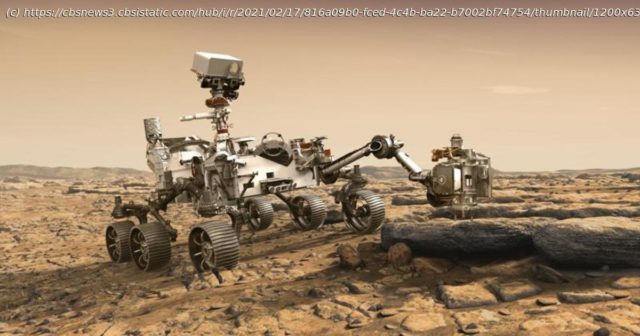The $2.4 billion rover must fly itself to the floor of Jezero Crater, avoiding an obstacle course of hazards along the way.
NASA’s Perseverance on the red planet after a journey of 293 million miles, hurtling toward a nail-biting seven-minute descent to touchdown Thursday. The mission is an unprecedented attempt to find signs of past microbial life at the site of an ancient martian river, delta and lakebed. Mission managers at NASA’s Jet Propulsion Laboratory in Pasadena, California, said Wednesday that the spacecraft, still attached to its interplanetary cruise stage, is healthy and flawlessly executing its final approach to, readying for a that engineers only half jokingly refer to as “seven minutes of terror.” Asked what the odds might be for a successful landing, deputy project manager Matt Wallace said the sheer complexity of the 2,260-pound rover, the heaviest and most sophisticated ever sent to Mars, makes it difficult to predict. “We’ve got two million lines of software code running hundreds of thousands of electronic parts, miles of copper conductors, we’ve got more than 70 pyrotechnic devices that all have to fire, closed-loop guidance and navigation control systems that really have to operate with sub-second precision for all this to work,” he said. “There (are) no go backs. There (are) no retries. It’s a difficult and dangerous part of the mission…. I think we’ve done everything we can to make it successful. And we’ll see how it goes tomorrow.” Seven months after from Cape Canaveral, the $2.4 billion rover, encased in a flying saucer-like aeroshell and protected by a blunt heat shield, will slam into the top of Mars’ discernible atmosphere at 3:48 p.m. EST. Hitting the thin, mostly carbon dioxide “air” at a blistering 12,000 mph, the spacecraft will rapidly decelerate, enduring heat shield temperatures as high as 2,370 degrees as it slows to just under 1,000 mph within about four minutes. At that point, at an altitude of about seven miles and a velocity of around 940 mph, a 70.5-foot-wide parachute will unfurl in the supersonic slipstream, slowing the spacecraft to just 200 mph by the time it reaches an altitude of 1.






